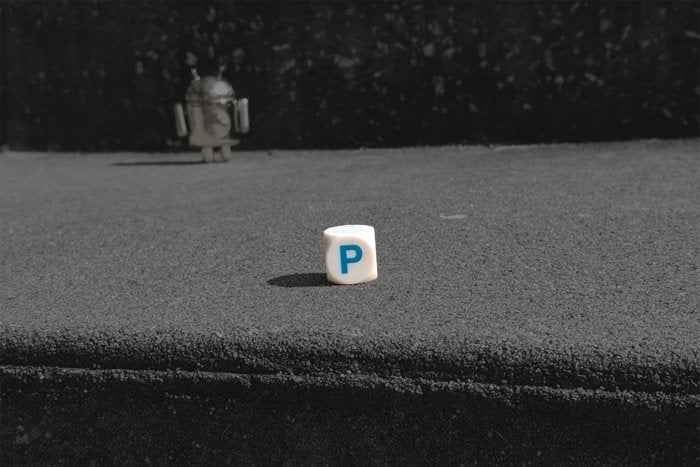As we enter the final phase in the countdown to Android P's public release, an intriguing new twist is becoming increasingly apparent: More than any Android release before it, Android P is first and foremost about Google's Android phones.
That, my friends — to put it lightly — is a pretty seismic shift.
We first got a whiff of this new reality back at the Google I/O developers' conference in May, when Google Engineering VP Dave Burke made the following disclaimer ahead of unveiling some of Android P's most prominent changes:
You'll find these improvements on any device that adopts Google's version of the Android UI, such as Google Pixel and Android One devices.
It was a casual aside — easy enough to ignore amidst the day's other attention-attracting announcements. But it might actually be the most monumental Android P development of all. And to be clear, we're not just talking about things like Google's default home screen design here. We're talking about integral, system-level-like elements such as the new Android gesture navigation system and the dramatically updated app-switching interface. These are core, defining elements of the operating system and elements that have traditionally existed as part of the OS itself.
With Android P, it appears they're leaving those confines — and that transition may be more significant than anything else Android P provides.
Now, hang on — before we go any further, let's get one thing straight: On some level, Android OS development has been at least partially about Google's self-controlled phones for quite some time. Samsung and other manufacturers have long meddled with the Android interface and disregarded Google's direction in order to do their own things, so the visual changes introduced with each new release have often ended up being relevant primarily for Pixel, Android One, and (in the past) Nexus devices.
But this time, something's different. With Android P, you see, once core-system-level functions seem to have been pulled out of Android itself and put directly into the Pixel Launcher — Google's device-specific launcher app for its Pixel phones. Such an arrangement appears to be the case with both the gesture nav system and the new app-switching interface mentioned above (and thus also with Android P's new Overview-based Smart Selection and App Actions features — features that, as of last week's third beta release, are explicitly being framed as exclusives not just for the Pixel line but for the Pixel 2 phones specifically).
And yes, Google has slowly but surely been pulling pieces out of Android and putting them into standalone apps for several years now. What's different here, though, is that the pieces in question aren't being put into broadly available Play Store apps that'll be preinstalled on or at least available for any phone; they're being bundled in with a Pixel-specific entity created for and limited to Google's own self-made products.
Whereas the previous deconstruction of the operating system was done in the name of faster updates to those elements for everyone, in other words, this bit of unbundling seems to be more about restricting access to the elements so that they're available only for those who use Google's Android phones. And beyond that, the elements involved here are incredibly foundational — one might even say defining — features of the software.
If Android P's gesture nav system and app-switching UI do indeed end up being Pixel exclusives (or even Pixel and Android One exclusives) — and assuming they end up being activated by default eventually, if not immediately — Google's Android phones could effectively exist as their own mini-nations within the greater Android ecosystem. We're not talking about different "skins" and presentations of the same basic elements here, as has often been the case in the past. We're talking about a wildly different system for getting around your phone — one of the most distinctive parts of the Android experience.
(There is, of course, another way this could play out: It's possible that Google might not limit all of the elements specifically to its Pixel or Pixel and Android One devices; it might instead use some of them as a carrot to entice companies to adopt its implementation of Android in order to get the "complete" Android P package for their devices. That'd be an equally noteworthy pivot, if so, and could essentially be a step toward turning those phones into Android-One-like extensions of the Google Android family.)
Now, don't get me wrong: An operating system update is about much more than the surface-level stuff. Heck, there's an argument to be made that the underlying performance improvements, security enhancements, and other under-the-hood elements are actually more important than any of the interface-level pieces. (And we can't forget about all the API-related changes, either — many of which serve to expand what third-party apps on the platform are able to do.) But as you and I both know, most typical users don't actively think about or notice those sorts of changes.
The changes they do notice — and the ones that make for the most attention-grabbing bullet points surrounding a new OS release — are those that relate to the user interface and its most visible or foundational functions. And with Android P, it's looking like the most prominent of those progressions may be less about Android as a whole and more about Google's Android devices.
Given Google's ongoing shift toward focusing on itself over any other entity as an ecosystem, that sure seems significant.
Sign up for JR's weekly newsletter to get more practical tips, personal recommendations, and plain-English perspective on the news that matters.

[Android Intelligence videos at Computerworld]
















